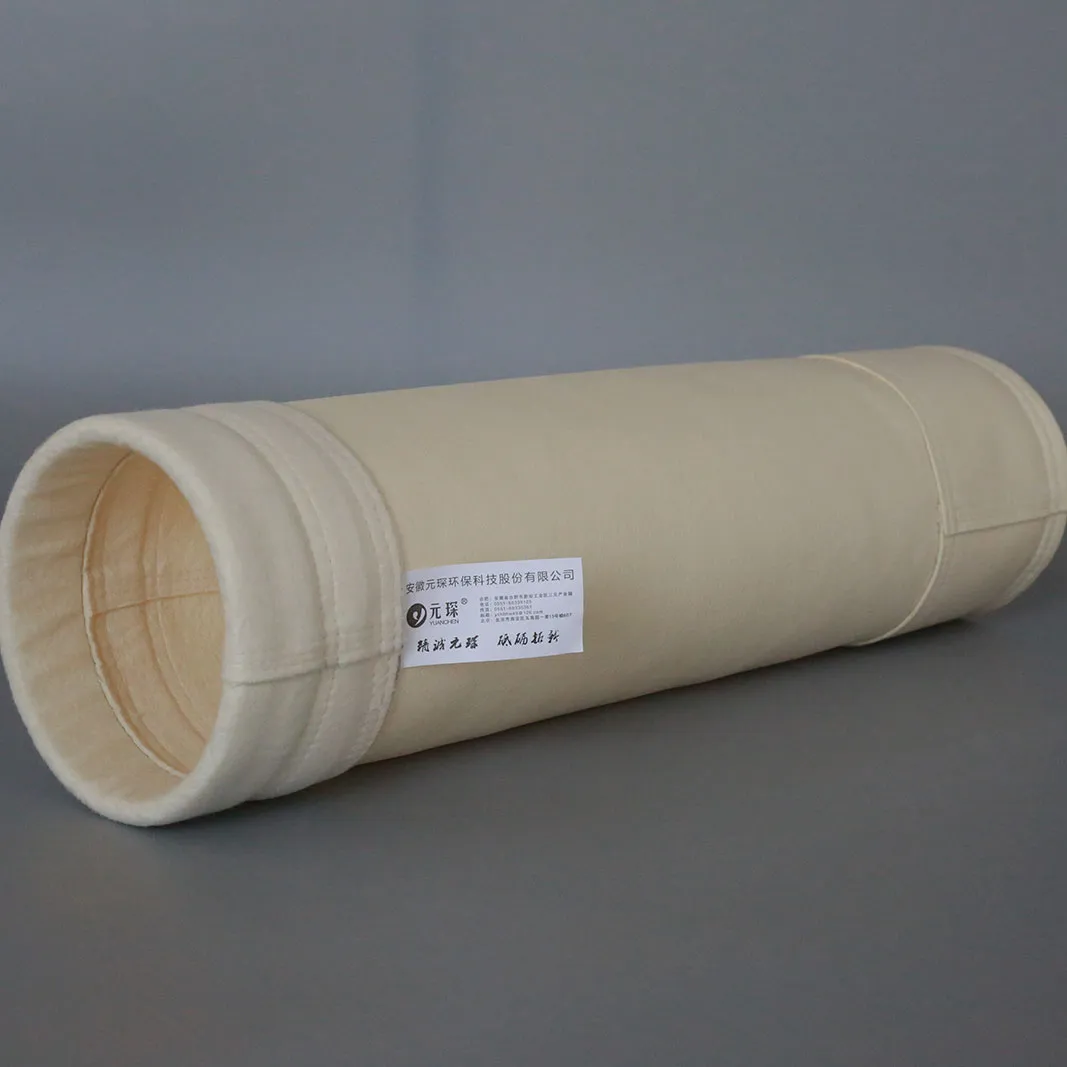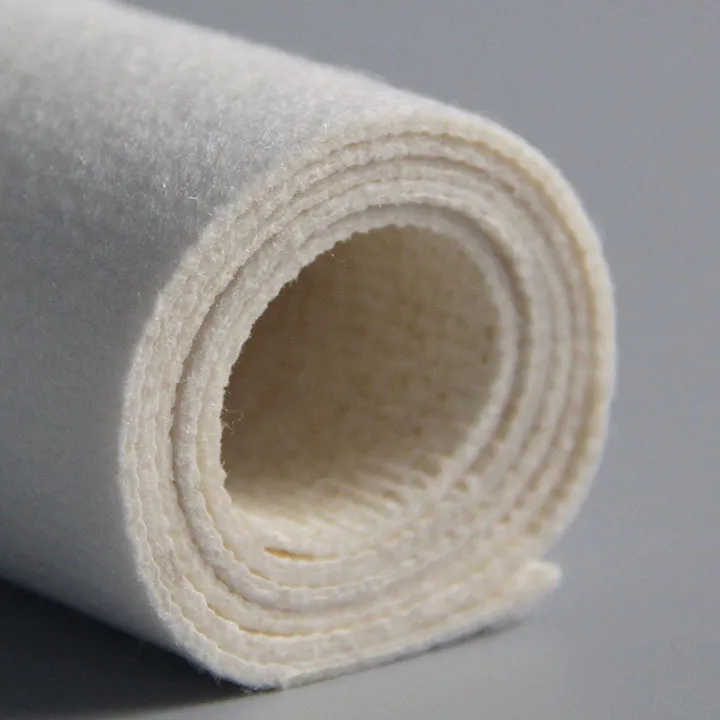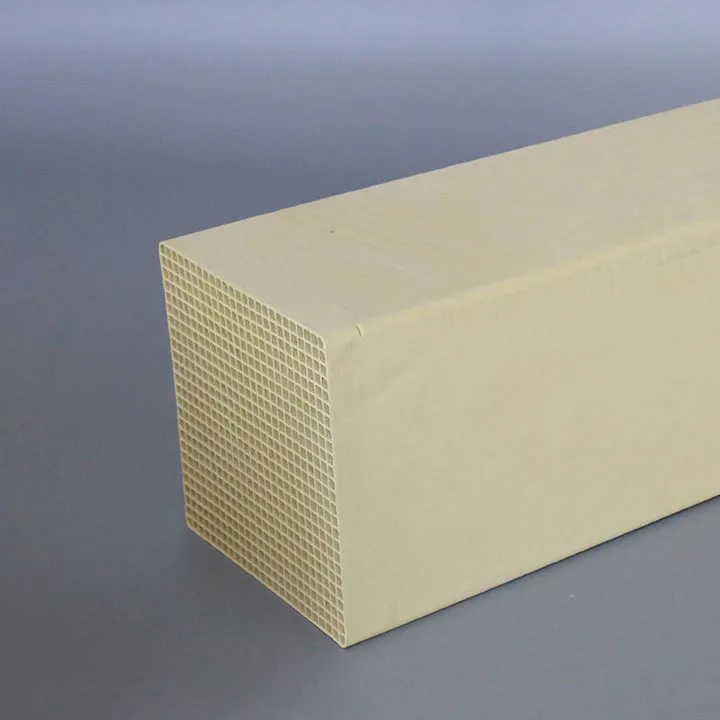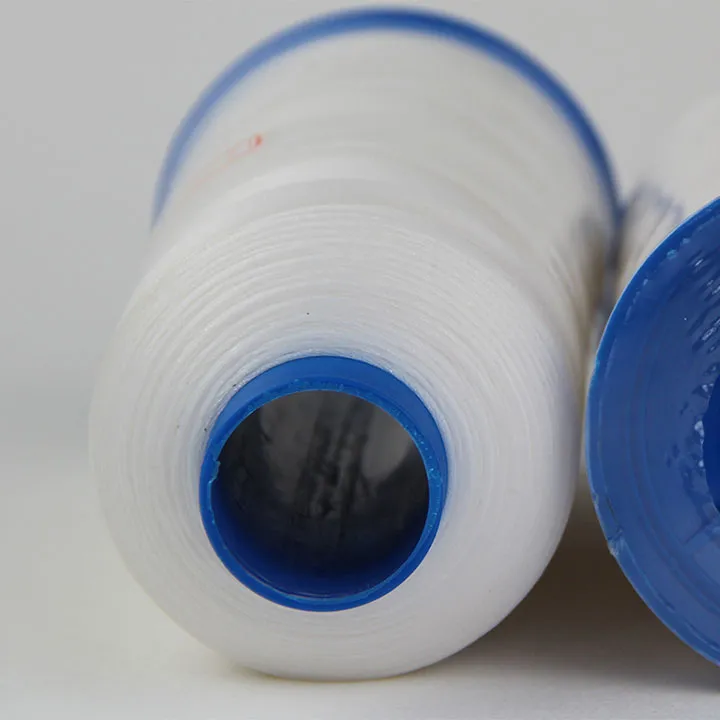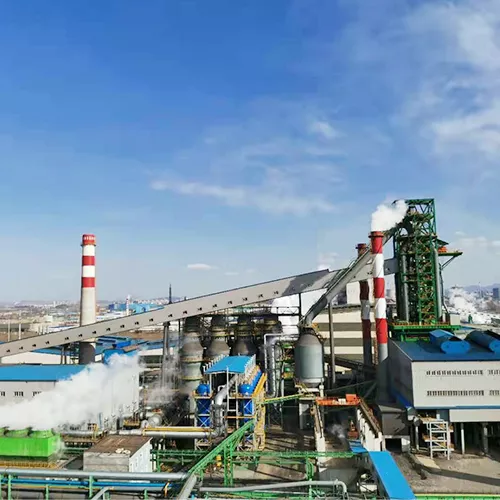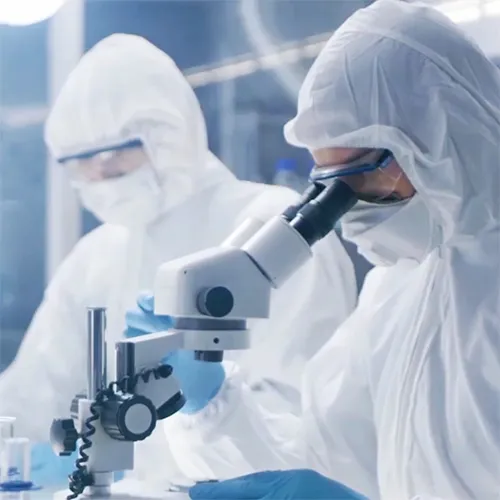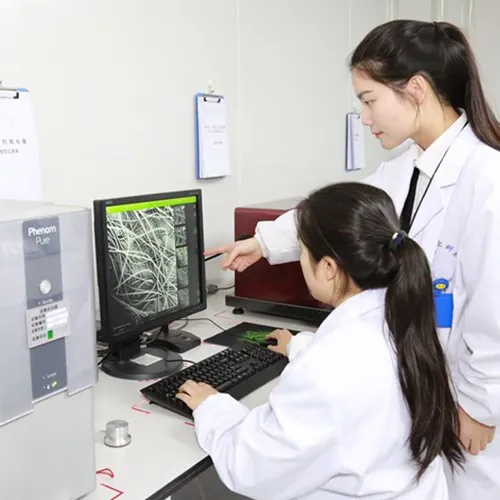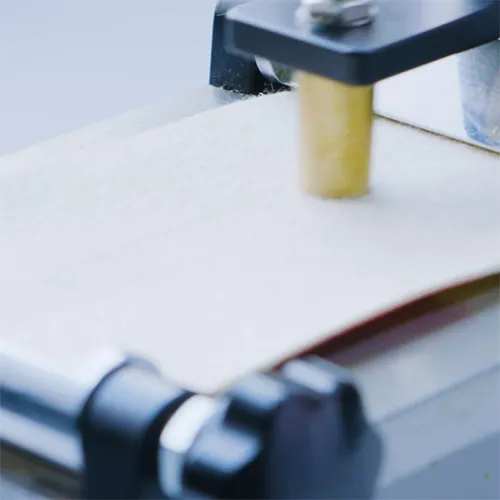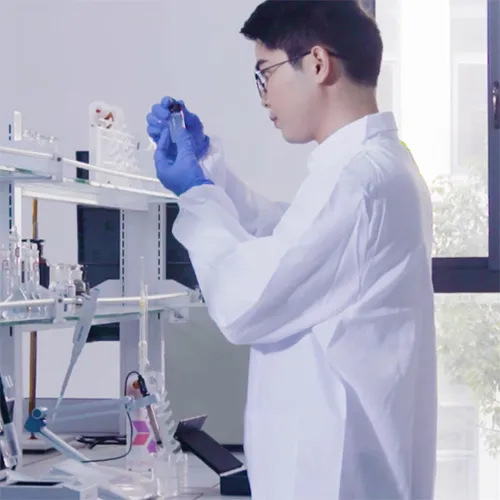How Are SCR Catalysts Tested?
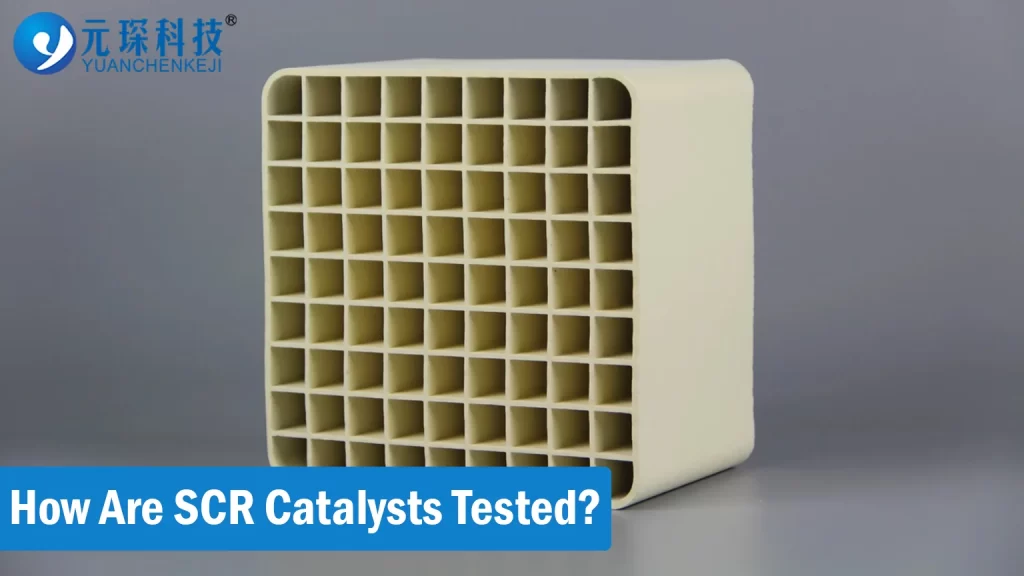
SCR technology is an effective option for reducing NOx emissions, which improves air quality and public health. Its widespread implementation is critical for ensuring regulatory compliance and accomplishing sustainable development objectives.
SCR catalysts are essential components of SCR systems. This article is aimed to provide insights into how SCR catalysts are evaluated, analyzed, and optimized for peak performance.
What is Selective Catalytic Reduction (SCR)?
Selective Catalytic Reduction (SCR) is a sophisticated emissions control technique that reduces hazardous pollutants released by combustion processes, notably oxides of nitrogen (NOx).
Selective Catalytic Reduction (SCR) is a sophisticated emissions control technique that is utilized in a variety of industries, including automotive, power generation, and marine. SCR systems help to reduce dangerous nitrogen oxide (NOx) emissions from diesel engines and other combustion processes. SCR technology uses a catalytic converter and a urea-based Diesel Exhaust Fluid (DEF) to convert NOx emissions into harmless nitrogen and water vapor.
NOx emissions, which are typically created during combustion processes, contribute to air pollution and environmental deterioration. They provide substantial contributions to smog generation, respiratory diseases, and acid rain.
SCR has many types of catalysts, but the ceramic honeycomb catalyst is considered to be the most efficient one, due to its excellent design.
How Do SCR Catalysts Work?
It works by turning NOx into nitrogen (N2) and water (H2O), which are both innocuous components of the atmosphere.
A catalyst in SCR systems promotes the conversion process, resulting in more efficient and environmentally friendly combustion.
The SCR catalyst system processes exhaust emissions from combustion engines, such as those found in diesel automobiles, power plants, and industrial sites. The catalyst is an important component of the SCR system, and it is commonly constructed of titanium dioxide or zeolite covered with metal oxides like vanadium or tungsten.
When exhaust gases travel over the catalyst, a chemical reaction happens between the NOx and a reducing agent, which is commonly ammonia (NH3) derived from diesel exhaust fluid (DEF), which is a type of SCR catalyst material.
Diesel Exhaust Fluid (DEF) is an important part of the SCR process since it supplies the reactant needed for NOx catalytic reduction. DEF is a perfectly blended aqueous solution consisting of 32.5% high-purity urea and 67.5% deionized water.
When heated, urea degrades into ammonia (NH3) and CO2. DEF is injected into the exhaust stream upstream of the catalyst, causing it to evaporate and produce ammonia. This ammonia then reacts with NOx on the catalyst surface, releasing harmless nitrogen and water vapor.
In the realm of environmental stewardship, the reduction of harmful emissions from industrial processes is paramount. Among these emissions, nitrogen oxides (NOx) from power plants pose significant challenges due to their adverse effects on human health and the environment. Selective Catalytic Reduction (SCR) stands as the most effective method for mitigating NOx emissions in power plants.
Principles of the DeNOx Process
SCR operates at temperatures ranging from 300°C to 400°C, converting NOx into harmless nitrogen and water vapor through chemical processes aided by catalysts. The procedure includes infusing ammonia (NH3) into flue gas before it reaches the reactor. Chemical equations demonstrate that when NH3 comes into contact with the catalyst, it stimulates the reduction of NOx molecules.
The Denox unit may be installed into power plants in a variety of configurations based on operating requirements. In the "high-dust" arrangement, the unit is located downstream from the boiler, between the economizer and the combustion air preheater. with contrast, with the "low-dust" design, it is located downstream of the electrostatic precipitator.
The ‘tail-end’ arrangement also allows for installation downstream of the desulphurization system, offering greater flexibility in managing NOx emissions.
Designing an effective Denox Catalyst reactor requires close consideration to a number of elements. Space velocity (SV), a crucial metric, influences flue gas residence time within the catalyst container. The reactor size is designed using pilot plant testing and computational fluid dynamic models to ensure proper mixing of NH3 and NOx molecules as well as steady gas flow.
SV calculations take into account reaction efficiency, temperature, permitted ammonia slip, flue gas analysis, and dust analysis.
The design handles variable performance by including more room for catalyst replenishment, increasing its service life. Variations in catalyst composition and cell architecture address various needs, including opportunities for recycling spent catalysts to recover valuable materials. Safety precautions, such as ammonia storage tank location, vaporization procedures, and disposal processes, assure operational reliability and environmental compliance.
Since this process also reduces nitrates and nitrites into nitrogen, it is sometimes also known as a denitrification test. This aspect really demonstrates how environment-friendly DeNOx process is.
Implementing the Denox Process requires a holistic strategy, from original design to operational execution. Engineers work closely with clients to customize solutions that match specific requirements and space restrictions. They maximize reactor performance and efficiency by combining advanced modeling approaches with real-world testing. Furthermore, regular monitoring and maintenance processes assure continued efficacy and regulatory compliance.
In the search of cleaner air and sustainable industrial practices, the SCR Denox catalyst Process emerges as a key technology for reducing NOx in power plants. This method provides a feasible avenue to reducing environmental impact by using SCR catalyst honeycomb principles and incorporating creative design and execution tactics.
As companies emphasize emission reduction and regulatory compliance, the Denox Process is set to play a critical role in crafting a greener, healthier future.
Why Testing SCR Catalysts is Important?
Selective Catalytic Reduction (SCR) is an important technique for lowering hazardous emissions from various combustion processes. SCR NOx catalysts are intended to help convert nitrogen oxides (NOx) into harmless nitrogen (N2) and water vapor (H2O), therefore drastically lowering emissions that contribute to air pollution.
Regular testing of SCR catalysts ensures that they are running at optimal efficiency, enhancing their ability to reduce NOx emissions. Testing helps to maintain optimal performance and achieve the intended emission reduction targets by ensuring that SCR systems are working properly.
SCR catalysts, like any mechanical or chemical system, are subject to wear, deterioration, and malfunction over time. Contamination, heat deterioration, and physical damage can all impact the effectiveness of SCR catalysts, resulting in lower efficiency and higher emissions.
Potential faults can be recognized early via systematic testing, allowing for prompt honeycomb catalyst maintenance or replacement to avoid costly failures and minimize downtime. Proactive testing not only helps to minimize operational delays, but it also increases the lifespan of SCR systems, allowing them to work optimally over time.
SCR technology is subject to strict regulatory protocols and emission limits established by environmental organizations across the world. Industries that use SCR systems, including as automotive, power generating, and industrial production, must follow these requirements to reduce their environmental effect and safeguard public health and safety.
Testing SCR catalysts is critical for ensuring compliance with emissions restrictions and meeting regulatory standards. Businesses that do extensive testing and document results can justify their environmental stewardship efforts, avoid penalties for noncompliance, and preserve the trust of regulatory authorities and the public.
What is the Procedure for Conducting SCR Catalyst Testing Properly?
A multimeter and an ohmmeter are two commonly used tools for evaluating SCR catalysts. These approaches give information on the state of the catalyst and aid in the diagnosis of any possible problems.
Accurate testing of SCR efficiency is critical for various reasons. For starters, it guarantees that the catalyst is running at maximum efficiency, which is required to fulfill emission reduction rules and maintain environmental standards.
Second, precise testing can help uncover catalyst faults or deterioration early on, avoiding costly repairs or replacements in the future. Finally, precise testing instills trust in the SCR system's effectiveness, offering operators and users peace of mind.
When testing SCR catalysts, it is critical to take safety precautions recommended by SCR catalyst manufacturers to avoid accidents or equipment damage. Some safety precautions to consider are:
1. To avoid burns or electrical shock, turn off the engine or equipment and ensure it is thoroughly cooled before doing any testing.
2. Wear adequate personal protection equipment (PPE), such as gloves and safety glasses, to avoid exposure to chemicals or electrical dangers.
3. To reduce the possibility of mistakes or mishaps, handle testing equipment according to the manufacturer's instructions and standards.
4. Work in a well-ventilated environment to prevent being exposed to exhaust fumes or other dangerous gases produced during testing.
5. Keep testing equipment and instruments properly calibrated and maintained to provide accurate results and prevent equipment failure.
Testing SCR Using a Multimeter
One of the two ways of testing SCR catalysts is through a multimeter. Here’s how it works:
1. To measure resistance, adjust the multimeter to the right settings. Make sure it works properly and that the leads are in excellent shape. Preparing the multimeter properly ensures that measurements taken end up being accurate, and you don’t get to a dread message that might say ‘SCR catalyst test failed’.
2. Connect the multimeter's positive lead (typically red) to the anode of the SCR (the positive terminal), and the negative lead (usually black) to the cathode (negative terminal). The multimeter cannot reliably measure the resistance across the SCR terminals unless the leads are properly connected.
3. With the leads connected as desired, the multimeter should show an open circuit, indicating a high resistance. Checking for an open circuit reveals that the SCR is not operating in its normal mode.
4. Switch the placements of the positive and negative leads. Again, the multimeter should indicate an open circuit. Reversing the connections demonstrates that the SCR is non-conductive regardless of the polarity of the applied voltage.
5. Connect the positive lead to the anode, and the negative lead to the SCR's gate terminal. The multimeter should show low resistance, which indicates that the SCR is turned on. Testing the gate terminal evaluates the SCR's ability to turn on when a positive voltage is provided to the gate.
6. Maintain the same connections from the previous step. Remove the gate terminal from the anode. The multimeter should continue to show low resistance, suggesting that the SCR is latched. Checking for the latching condition guarantees that the SCR continues to conduct even after the gate voltage is withdrawn, indicating stable functioning.
Once you have taken readings on your multimeter, it’s time to interpret what they mean:
1. Open circuit: This indicates that the SCR has a high resistance and is non-conductive.
2. Low resistance: Conductivity indicates that the SCR is in an "on" state.
3. Consistent low resistance after removing the gate terminal: This indicates that the SCR has latched and can continue to conduct even without the gate voltage.
Testing SCR with an Ohmmeter
The procedure to test SCR with an ohmmeter goes as follows:
1. To avoid electrical shock, cut the power to the SCR system and discharge all capacitors.
2. Turn on the ohmmeter and choose the resistance (ohms) mode.
3. Connect the ohmmeter's positive output lead (red) to the SCR's anode, and the negative lead (black) to the cathode.
4. The ohmmeter should show no continuity, which means the SCR is not conducting electricity in its default condition.
5. Touch the SCR gate to the anode while keeping the positive lead attached. This applies a voltage to activate the SCR.
6. The ohmmeter should show continuity through the SCR, indicating that it has turned on.
7. Remove the gate lead from the anode. The SCR should either retain conductivity (if the ohmmeter provides enough current to keep it above the holding current level) or cease conducting if the current falls below the holding level.
8. Continuity through the SCR before contacting the gate to the anode indicates a shorted circuit. If continuity is not detected after adding gate voltage, this indicates an open SCR.
Advantages and Limitations of Ohmmeter Testing
Advantages
1. Ohmmeters give exact resistance measurements, which are required for reliable evaluation of SCR functioning.
2. Ohmmeters are specifically intended to measure resistance, reducing the danger of inaccuracies associated with multimeter operations.
3. Because of its specialized role, ohmmeters provide more dependability in SCR testing, delivering consistent and predictable findings.
Limitations
1. Ohmmeters are specialized tools used to measure resistance and may not be as versatile as multimeters for other electrical testing.
2. Because of its specialist nature, ohmmeter testing may be more difficult for beginners than multimeter testing.
3. Ohmmeters, while more precise, may be more expensive than simple multimeters, thus discouraging some consumers.
How does it compare with Multimeter Testing?
Since we’ve discussed two methods, its only fare to compare them, to see which one is better:
1. Precision: When it comes to measuring resistance, ohmmeters often provide more precise and accurate readings than multimeters.
2. Dedicated Function: Ohmmeters are particularly intended to measure resistance, but multimeters have numerous purposes, which may result in less exact results for SCR testing.
3. Simplicity: Multimeters may add complexity owing to its numerous purposes, whereas ohmmeters are simple and designed for resistance measurements.
Environmental Benefits of SCR Technology
SCR technology has considerable environmental advantages since it efficiently reduces NOx emissions, which are a major contributor to air pollution and environmental deterioration. SCR systems enhance air quality by converting NOx into harmless nitrogen and water, hence reducing the development of smog, acid rain, and particle matter.
SCR-equipped engines have higher fuel economy and lower fuel consumption than previous, less efficient technology, contributing to environmental sustainability.
Overall, SCR technology represents a significant advancement in reducing the negative impacts of combustion processes on human health and the environment. Its extensive use across sectors demonstrates its efficacy and significance in producing cleaner, more sustainable energy solutions.
Conclusion
Regular testing of SCR catalysts has emerged as an important part of assuring optimal performance and compliance with emissions laws. By frequently checking the effectiveness of SCR catalysts, companies may reduce the chance of failure, reduce environmental impact, and maintain operational efficiency.
Following the outlined steps to test SCR catalysts not only allows for correct assessment of SCR catalysts, but it also improves safety precautions and decreases the possibility of mistakes.
Find the best SCR Denox Catalysts here at Leading Filter . For any query, feel free to Contact us now!


